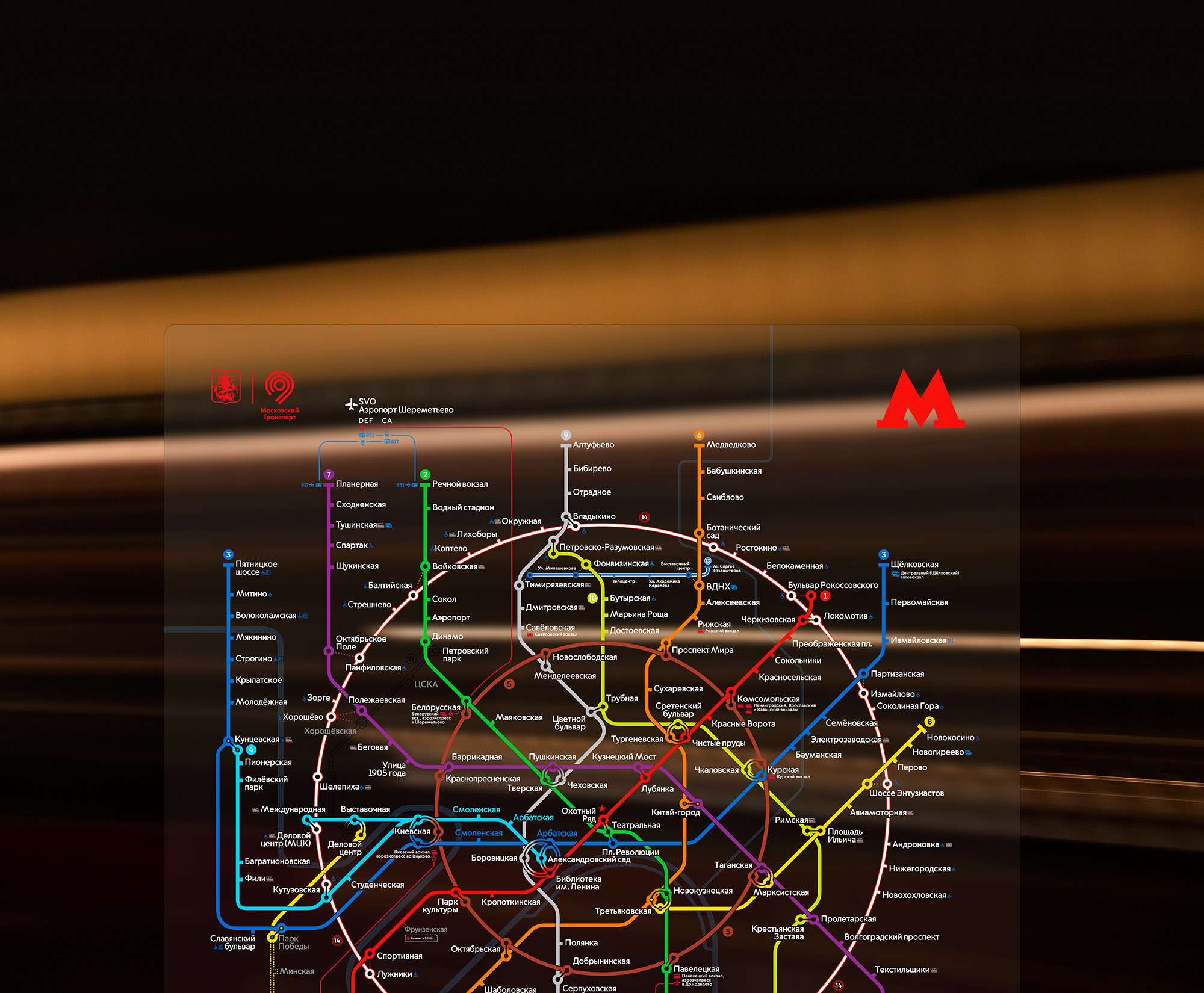The updated map features the new circle line with 31 stations. Despite considerable changes, the map retained its traditional look and all the stations can still be found in their old places.
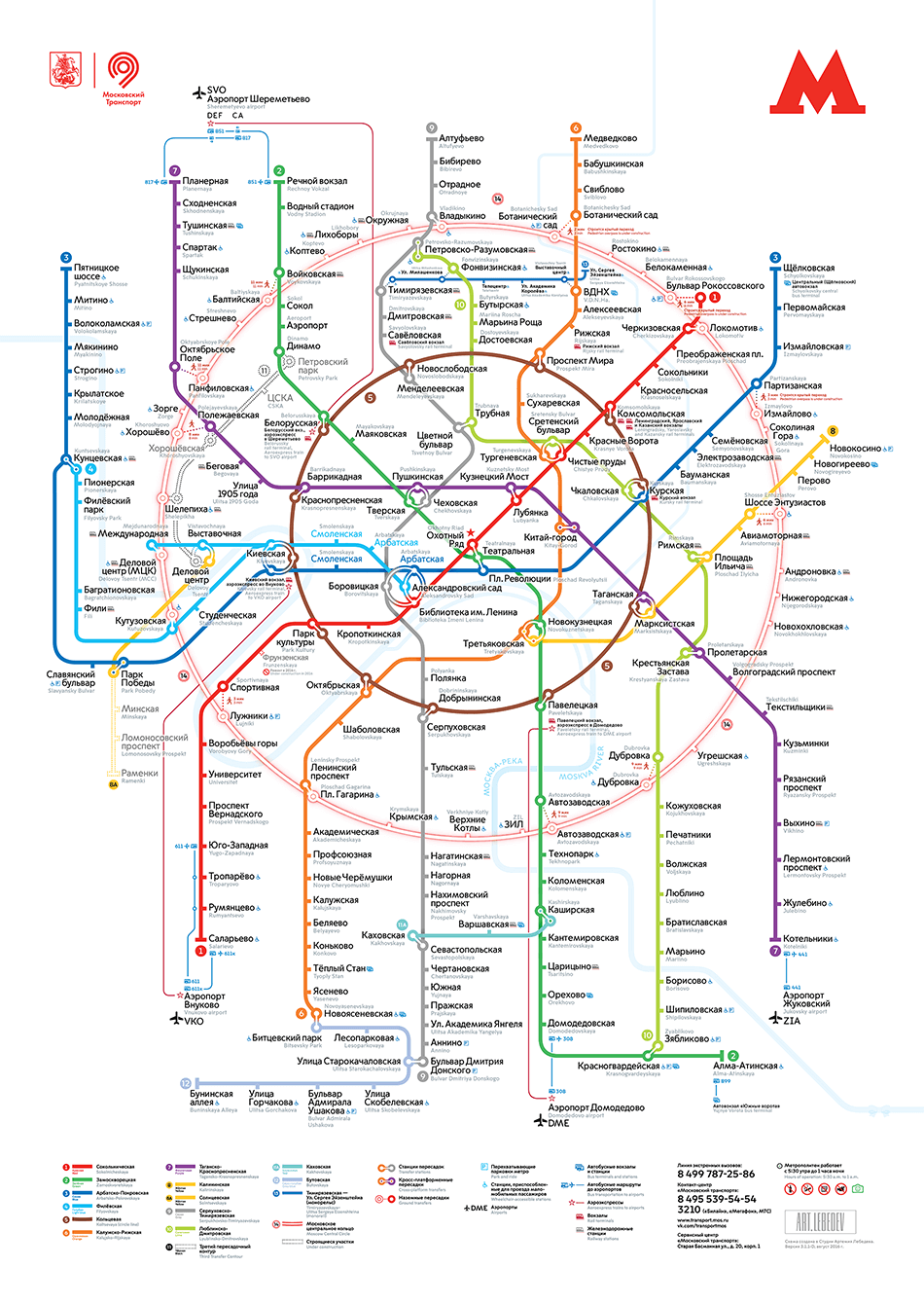
The new line is expected to lessen the load on the Circle line and central stations, make trips across the city easier and faster, provide convenient interchanges with intercity railway routes and connect the capital’s main parks.
In real life, the railroad is elongated in its northern part, yet the map presents it as a circle, the bright and recognizable symbol of Moscow.
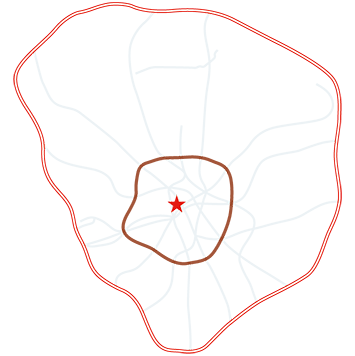
|
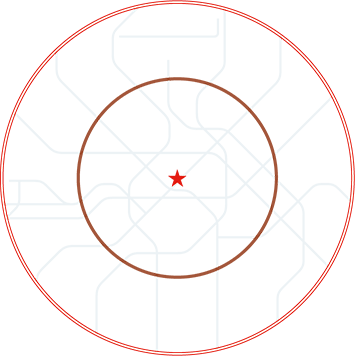
|
|
Geographic location of the two circle lines
|
Two circle lines on the map
|
The new ring is connected to nine Metro lines with 16 transfers, five of which are indoor and three more are planned to become indoor in the future. These features are clearly shown on the map. For stations where passengers have to make a transfer outside, transfer time is given.
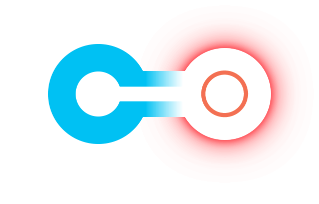
|
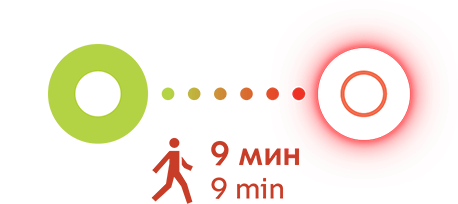
|
|
Indoor transfer
|
Outdoor transfer
|
Car maps
The map 3.0 is typeset in all formats for cars of all types. This version lacks the alphabet index which allowed to make the map larger and easier to read.
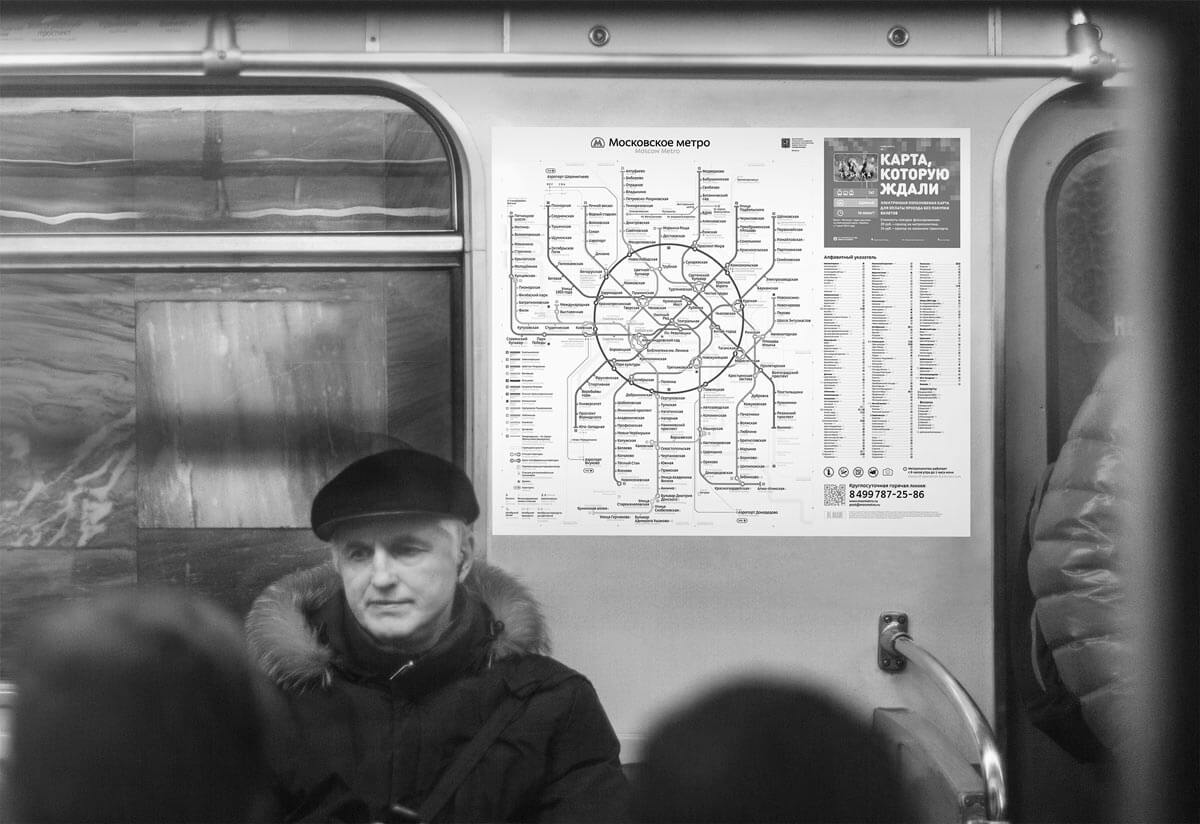
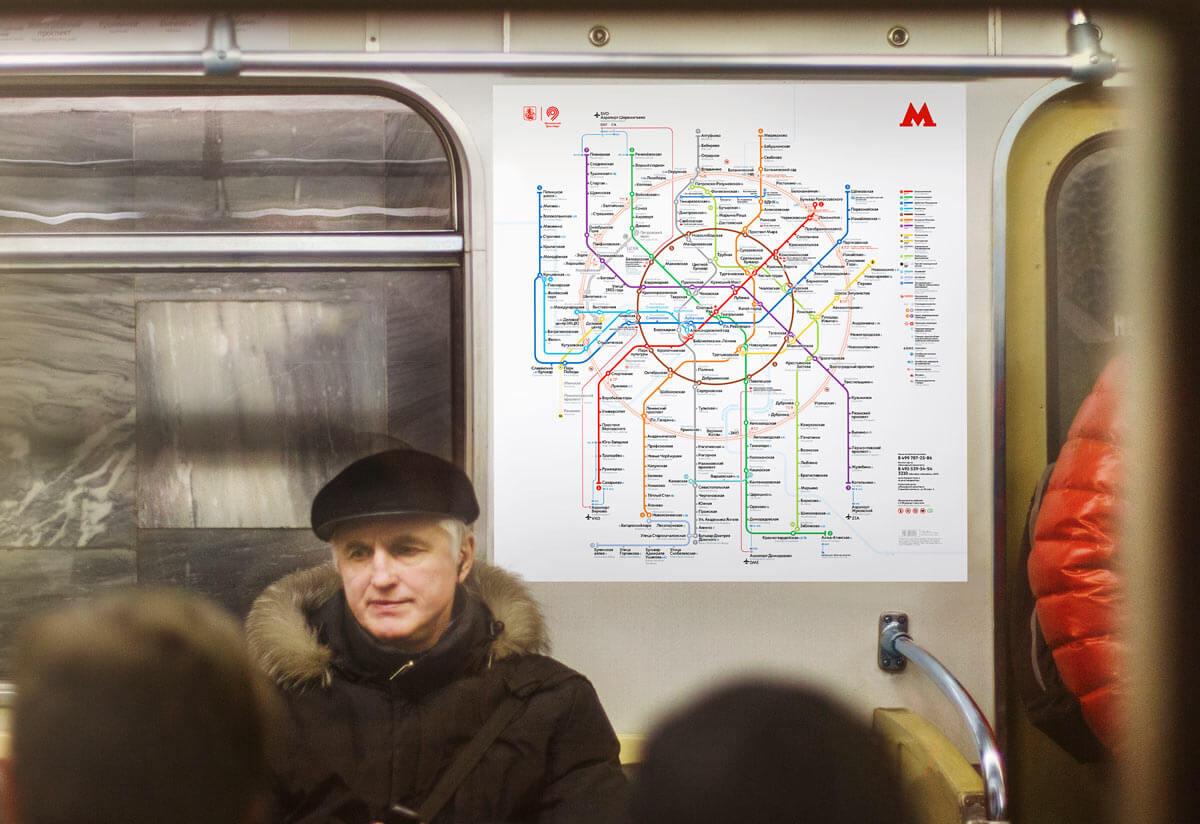
Metro rules have also been refreshed. The new version is lighter and easier to read thanks to the large header, equal spacing, wide margins and quiet color scheme. Adhering to the Moscow Transport visual standards, the text was typeset in Futura typeface; some small errors were also fixed.
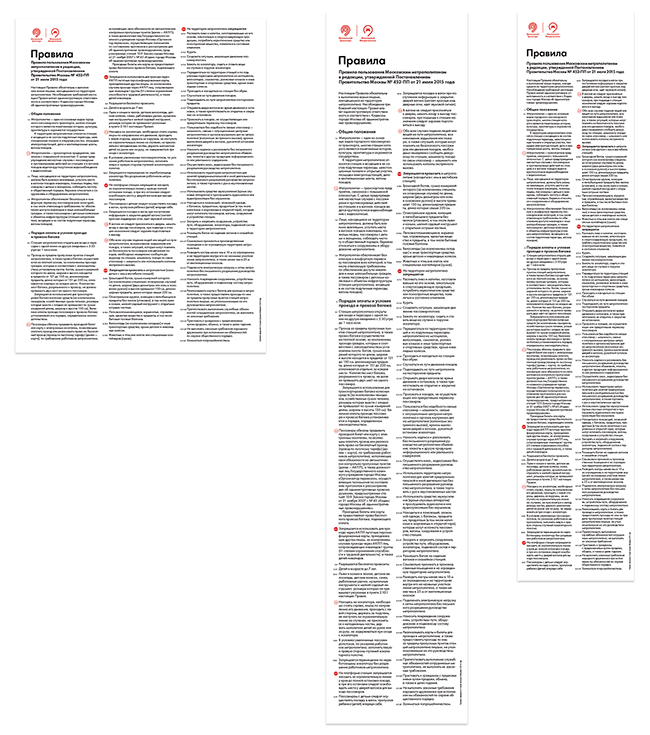
Platform map
The map for SOS columns now has an index to help passengers plan their route before boarding a train.
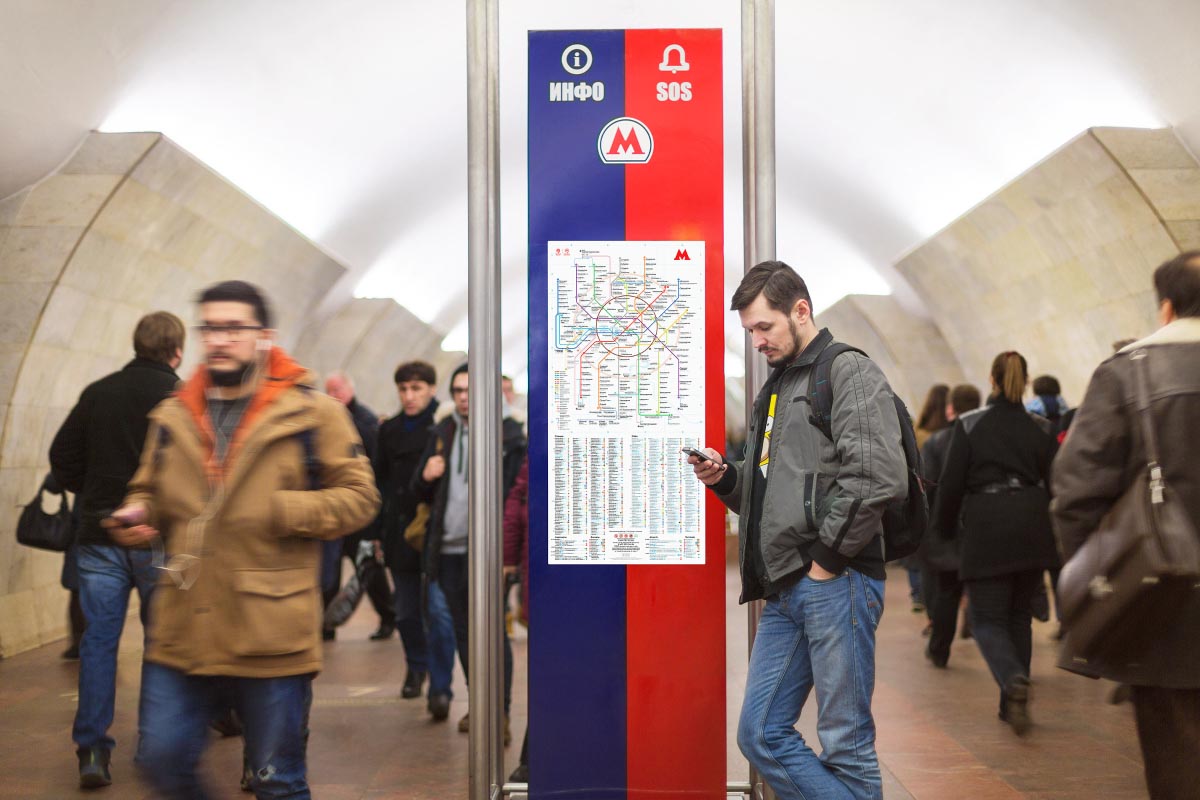
The updated round map is placed inside stations or at their entrances.
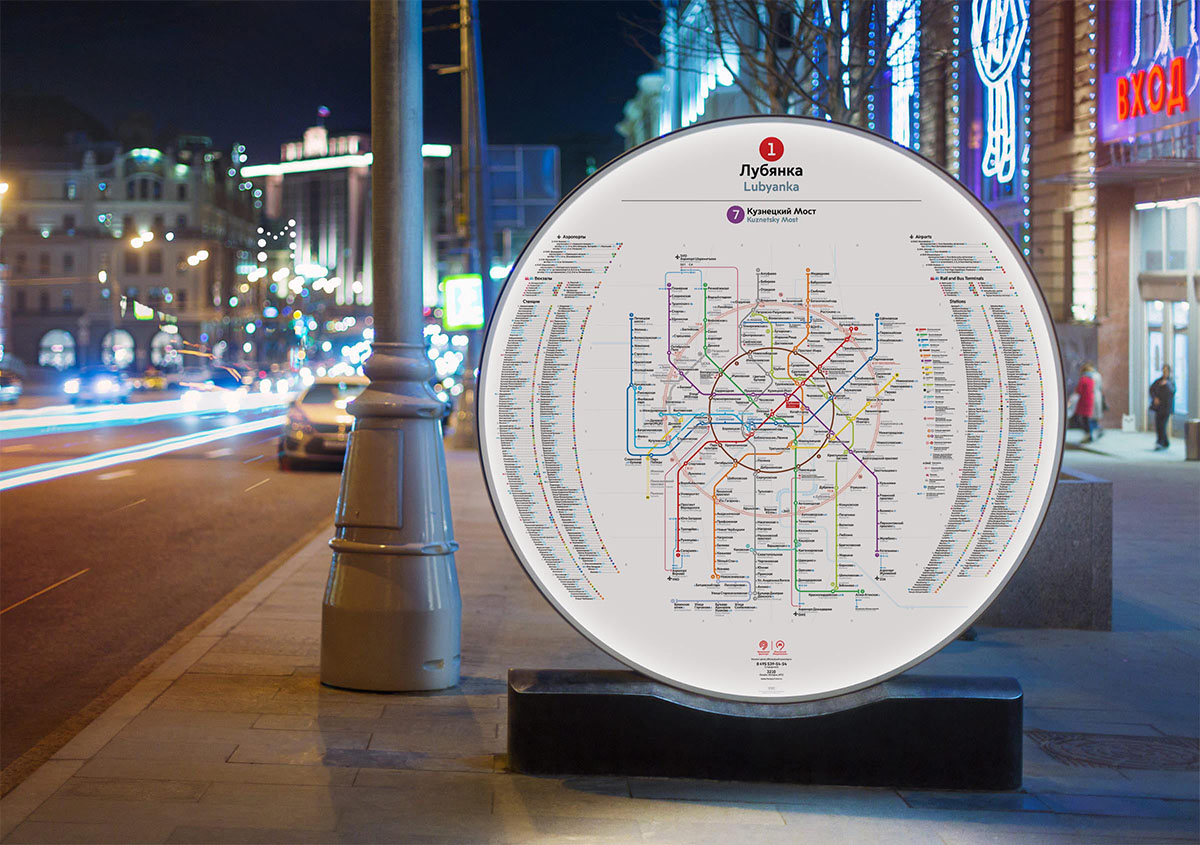
Station map
The updated map for stations shows main Moscow landmarks and parks.
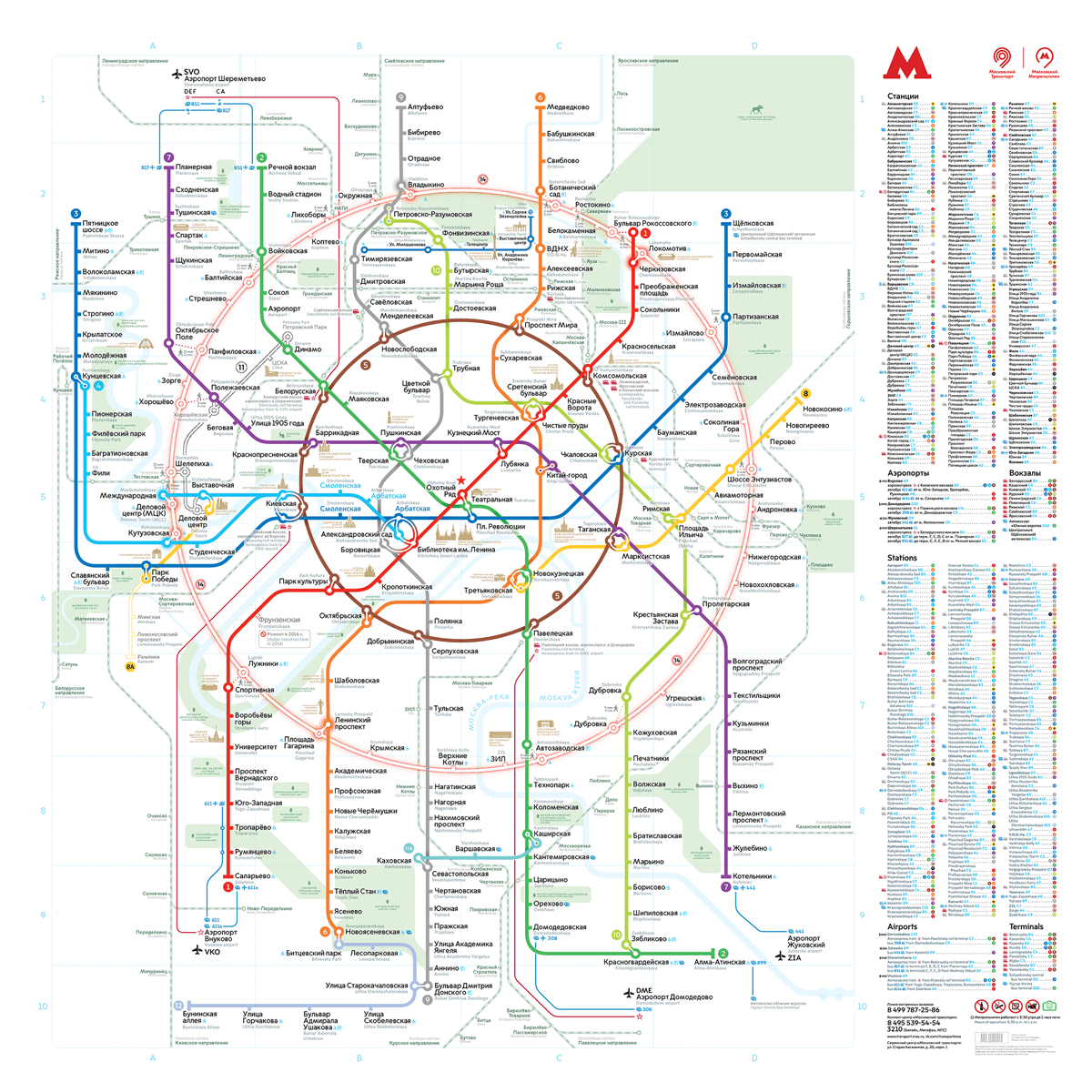
Transparent map
Transparent version of the map is attached to car door windows. This version was adapted for easy reading in various conditions: in tunnels and in bright light, during the day and at night.
The map is made of two layers: first, opaque white paint is applied to transparent base, then colored lines are printed on top. Cutouts are used instead of shadows and backgrounds behind the text. English text was removed to increase legibility.
The transparent map will soon appear in Rusich trains operating on Filevskaya and Butovskaya lines.
